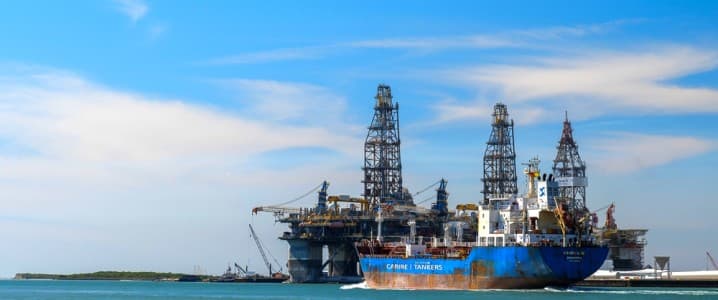
Exxon has estimated the size of a natural gas discovery off the coast of Cyprus at between 8 and 9 trillion cubic feet, local media has reported, citing a meeting between the supermajor and the president of the island nation.
“Based on preliminary data, combined with the existing ‘Glafkos’ field, [Pegasus] reserves are estimated at 8 to 9 trillion cubic feet. These are very positive findings and encouraging messages from ExxonMobil,” Cypriot government spokesman Konstantinos Letympiotis said, as quoted by Greek City Times.
Exxon is exploring for natural gas in Cyprus in tandem with QatarEnergy. The two made their first discovery back in 2019, sparking hopes for more. Earlier this year, a drilling campaign in another offshore block failed to turn any commercial finds and Exxon ended. The well encountered gas, but in quantities too small for development, with the outcome raising concerns about the broader resource potential in Cyprus’s southern offshore acreage. In Block 10, however, the supermajor and QatarEnergy struck gas twice, and now there is confirmation that the finds are commercial.
Cyprus is advancing plans to become a regional gas export hub, and Block 10 is central to those ambitions. Possible development scenarios include subsea tiebacks to Egypt’s liquefaction plants at Idku or Damietta, which could offer a near-term export route to Europe and Asia. However, given the complexity of deepwater development and the earlier absence of declared volumes, a final investment decision remained a distant prospect.
This could change with the latest update, adding to four more gas discoveries made offshore Cyprus and highlighting the emergence of the Eastern Mediterranean as a potential gas production and export hub. Besides the Pegasus and the Galfkos discoveries, Exxon and QatarEnergy have one more in Block 10, the Glaukus-1. Separately, Italian Eni and French ToalEnergies have struck gas at three wells in Block 6. One of these, Cronos, has reserves estimated at 3.1 trillion cubic feet, and the other, Zeus, holds an estimated 2.5 trillion cubic feet of gas.
Source: By Irina Slav from Oilprice.com
